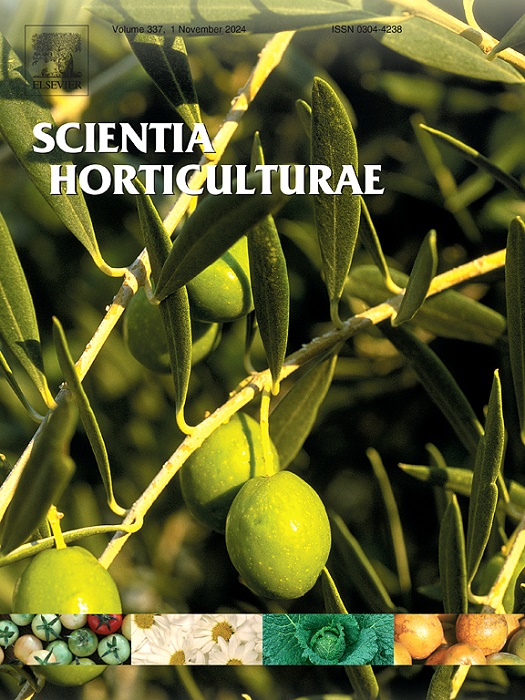激光后向散射成像技术鉴定番茄瘀伤
IF 3.9
2区 农林科学
Q1 HORTICULTURE
引用次数: 0
摘要
由于大规模生产和对高质量标准的要求,准确检测西红柿中的瘀伤是采后加工的一个重大挑战。由于瘀伤导致的营养价值和产品外观降低会影响市场价值和销售价格。因此,本研究旨在开发一种基于激光后向散射成像(LLBI)的番茄损伤识别技术。总共收集了300个样品,并将其分为两大类,即完好的西红柿和破损的西红柿。用不同波长的激光(450、532和648 nm)以20°的入射角扫描每个水果,以监测其结构特征。在后向散射图像中,利用灰度共生矩阵提取对比度、不相似度、均匀性、能量、角秒矩和相关性等6个纹理特征。此外,采用具有线性、径向基函数(RBF)和多项式等多种核函数的支持向量机来检测瘀伤。结果表明,基于数值分析,LLBI技术能够识别西红柿中的瘀伤,准确率为96.111%。该技术实现了激光波长和核函数分别为648 nm和RBF的最佳组合。因此,这种创新的LLBI技术有可能优化采摘后处理过程中园艺产品的质量监测,降低水果拒收率,并防止农业工业部门的经济损失。本文章由计算机程序翻译,如有差异,请以英文原文为准。
Identification of tomatoes with bruise using laser-light backscattering imaging technique
Accurately detecting bruise in tomatoes is a significant challenge in postharvest processing due to large-scale production and the demand for high-quality standards. Reduced nutritional value and product appearance due to bruise can affect market value and selling price. Therefore, this study aimed to develop a sensing technology based on laser-light backscattering imaging (LLBI) to identify the bruise of tomatoes. A total of 300 samples were collected and labeled into two main classes namely sound and bruised tomatoes. Each fruit was scanned with various laser wavelengths (450, 532, and 648 nm) at an incident angle of 20° to monitor the structural characteristics. In backscattering image, the gray-level co-occurrence matrix was implemented to extract six texture features including contrast, dissimilarity, homogeneity, energy, angular second moment, and correlation. Additionally, a support vector machine with various kernel functions namely linear, radial basis function (RBF), and polynomial was used to detect bruise. The results showed that based on numerical analysis, the LLBI technique was capable of identifying bruise in tomatoes with an accuracy of 96.111 %. The proposed technique implemented the best combination of laser wavelength and kernel function of 648 nm and RBF, respectively. Therefore, this innovative LLBI technique has the potential to optimize quality monitoring of horticultural products during postharvest handling, reduce fruit rejection rates, and prevent financial losses in the agro-industrial sector.
求助全文
通过发布文献求助,成功后即可免费获取论文全文。
去求助
来源期刊

Scientia Horticulturae
农林科学-园艺
CiteScore
8.60
自引率
4.70%
发文量
796
审稿时长
47 days
期刊介绍:
Scientia Horticulturae is an international journal publishing research related to horticultural crops. Articles in the journal deal with open or protected production of vegetables, fruits, edible fungi and ornamentals under temperate, subtropical and tropical conditions. Papers in related areas (biochemistry, micropropagation, soil science, plant breeding, plant physiology, phytopathology, etc.) are considered, if they contain information of direct significance to horticulture. Papers on the technical aspects of horticulture (engineering, crop processing, storage, transport etc.) are accepted for publication only if they relate directly to the living product. In the case of plantation crops, those yielding a product that may be used fresh (e.g. tropical vegetables, citrus, bananas, and other fruits) will be considered, while those papers describing the processing of the product (e.g. rubber, tobacco, and quinine) will not. The scope of the journal includes all horticultural crops but does not include speciality crops such as, medicinal crops or forestry crops, such as bamboo. Basic molecular studies without any direct application in horticulture will not be considered for this journal.
 求助内容:
求助内容: 应助结果提醒方式:
应助结果提醒方式:


